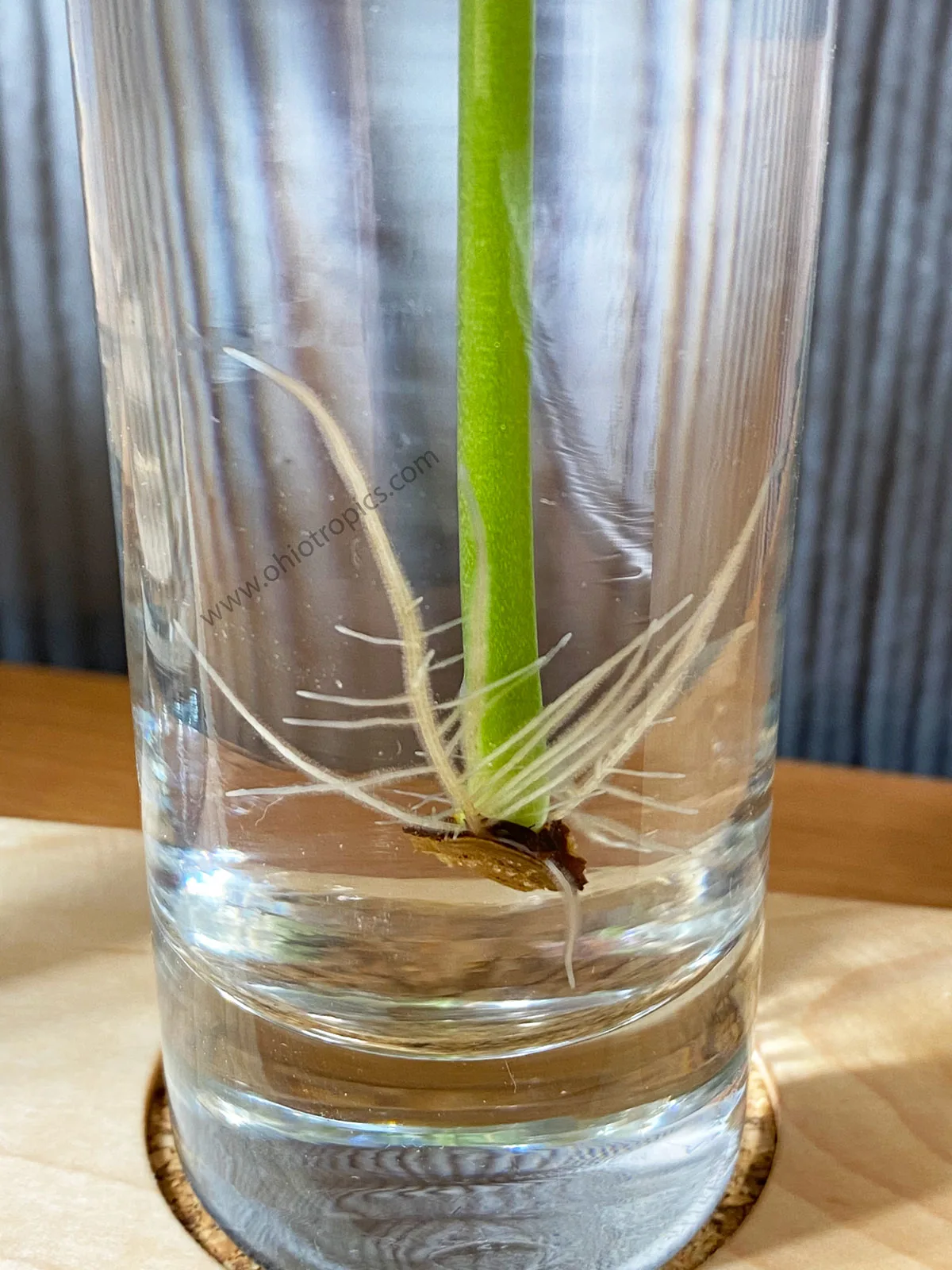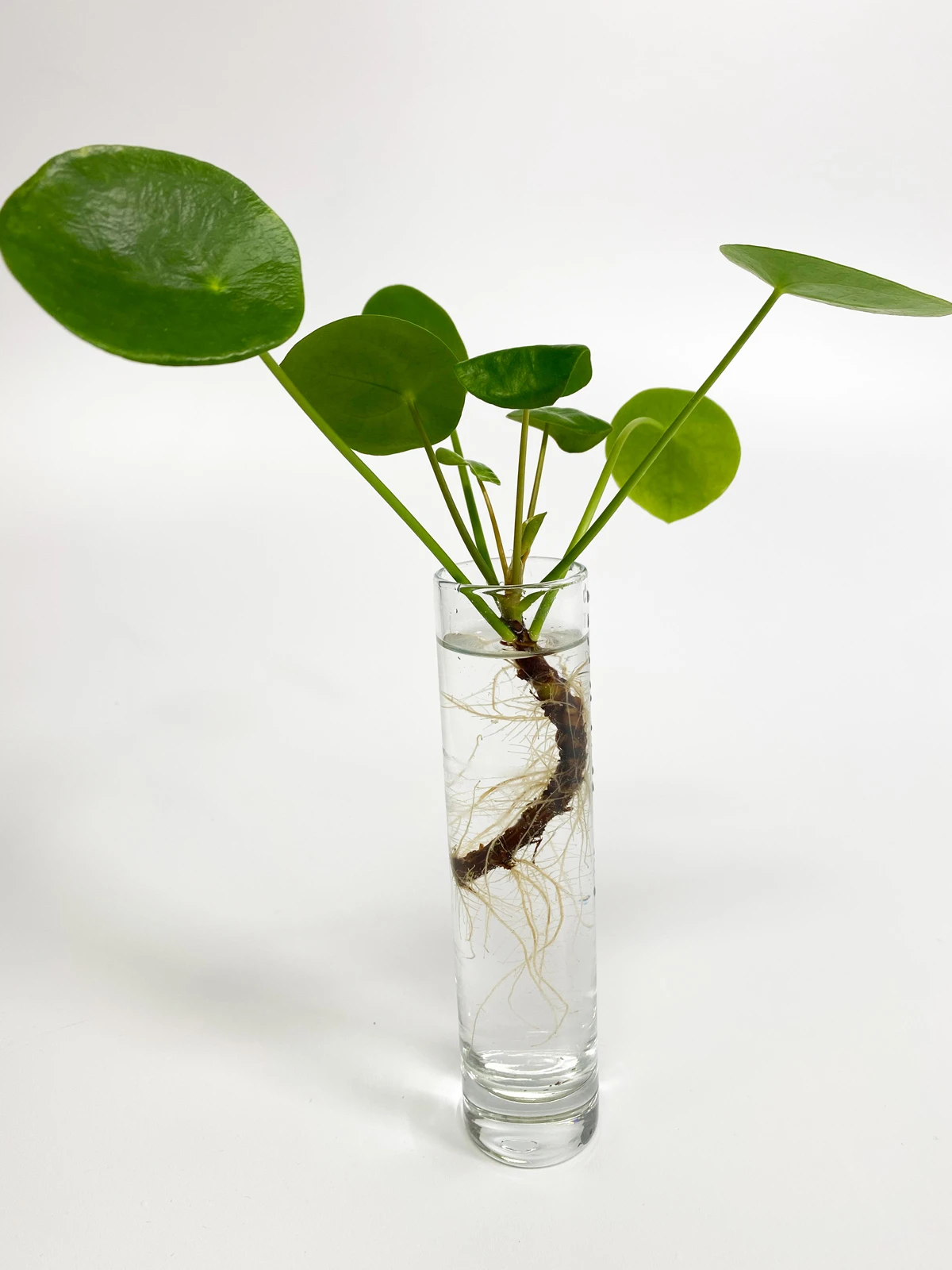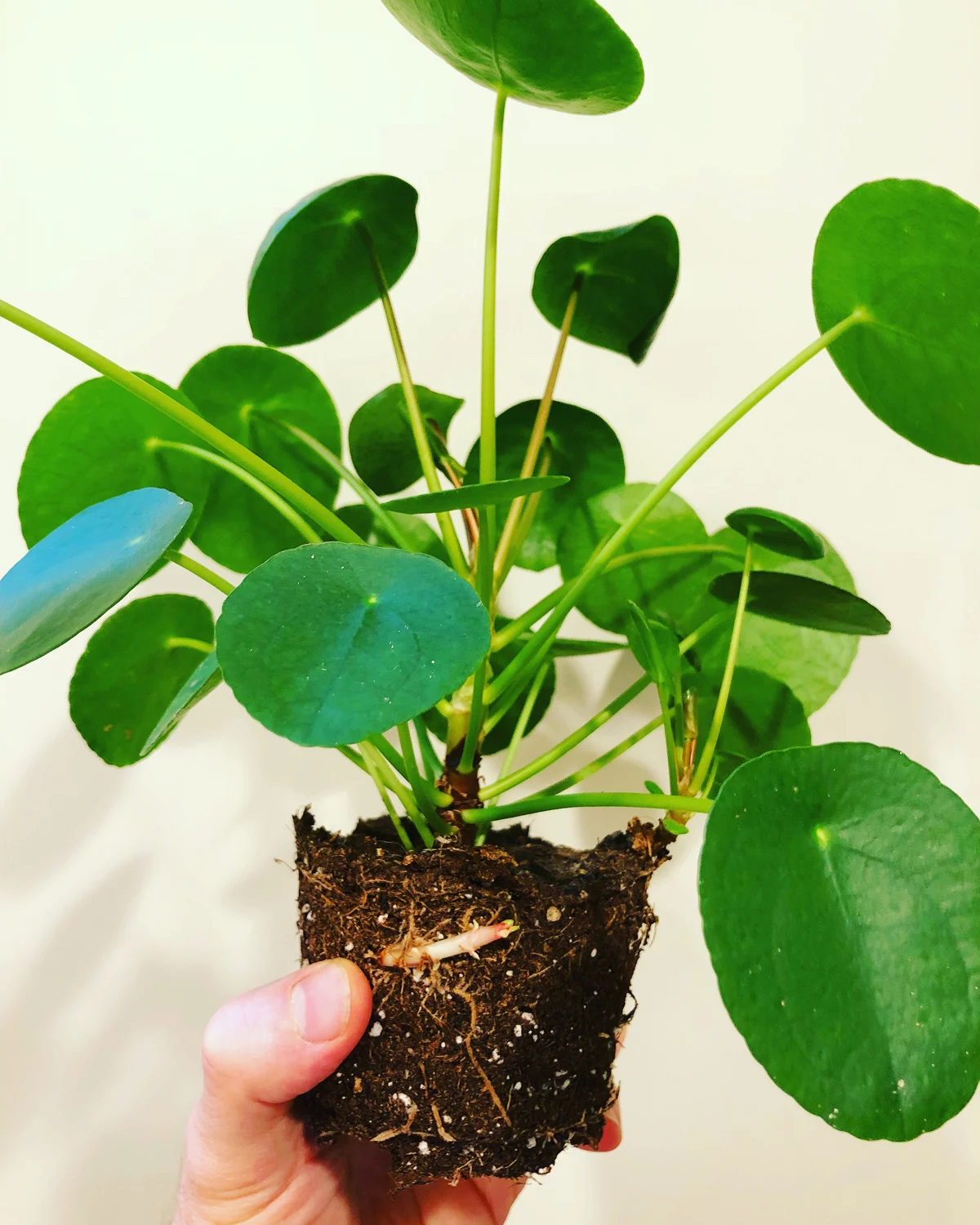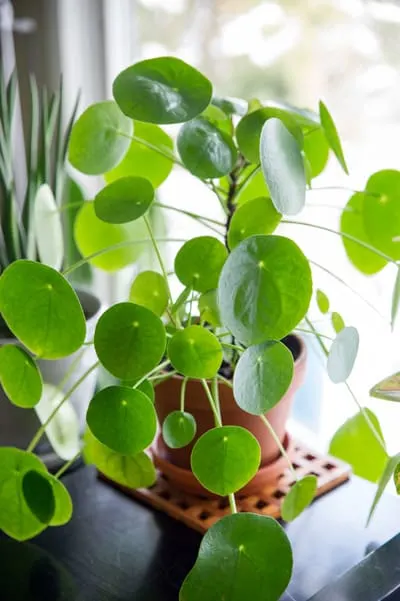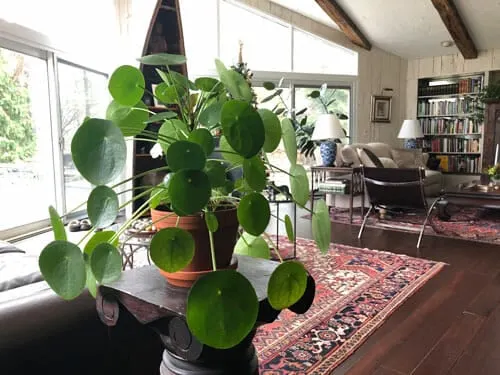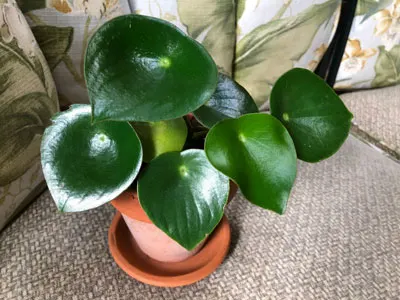Some of the links in this post may be affiliate links.
Pilea glauca, sometimes also known as Pilea libanensis or Silver Sparkle Pilea, is an unusual and amazing houseplant with hundreds of cascading gray leaves that is a sheer delight to grow!
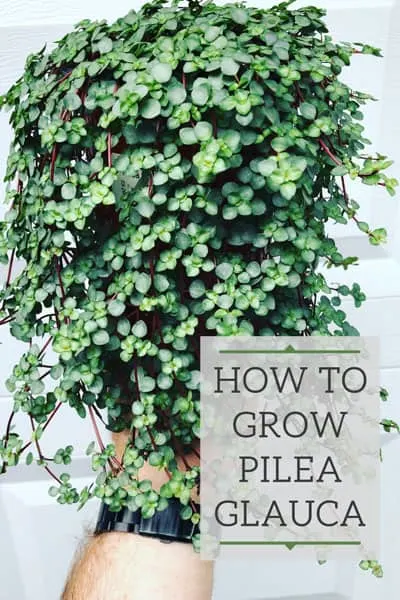
I’d like to share with you all my growing tips for this plant, as well as where you can buy your own.
I’ve developed a special working relationship with a fantastic grower of tropical plants so I will share that with you soon!
So whether you call it Pilea glauca or libanensis, leave it to the botanists to figure that out. I’m here to give my most important care tips for this dainty little houseplant.
Table of Contents
Pilea Glauca Care
There are so many different kinds of plants in the Pilea genus! Take a look at the difference between Pilea glauca (left) and Pilea peperomioides (right).
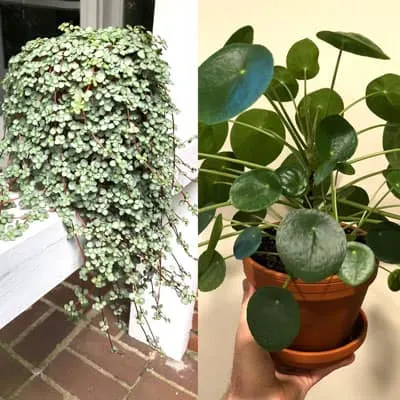
Really, there is a Pilea for everyone, and these are just two species.
I’ve written a very detailed blog post on the wildly popular Pilea peperomioides, or Chinese Money Plant so be sure to check it out after you go through this post.
Pilea glauca is a very different looking species that has reddish stems and a profusion of small, cascading, tiny gray leaves.
I really believe that it is easy to grow, but it is not a plant that you can neglect for long periods of time. It does require special attention to watering to look its best.
It is a very rewarding plant to grow indoors, and it adds a special touch to any houseplant collection!
It looks great in a hanging basket, or just cascading over your plant shelf. I’ve even grown this plant in annual baskets outdoors as well and used it as an annual.
So, how do you care for Pilea glauca?
LIGHT
I would recommend placing this plant directly in front of a window that gets bright indirect light all day
Even up to a few hours of morning sun (especially in the winter!) will be very beneficial.
That’s really all there is to it where light is concerned.
I’m growing my own plant in my sunroom in the corner which faces North and East so it does get some direct morning sun.
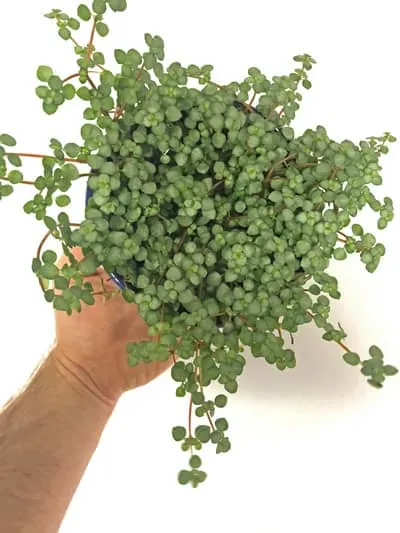
It can reportedly make a good terrarium plant and grow well under artificial light. I’m actually going to be making a terrarium so I may just add some and will update this post if I do!
WATERING
If you have a heavy hand with your watering can, you will want to practice a little restraint on this plant. If you keep this plant too wet, it can readily rot out on you.
So NEVER let this plant sit in water for extended periods of time. After you water, be sure that all the excess water is discarded and that the bottom of the pot, where the drainage holes are, is not sitting in water.
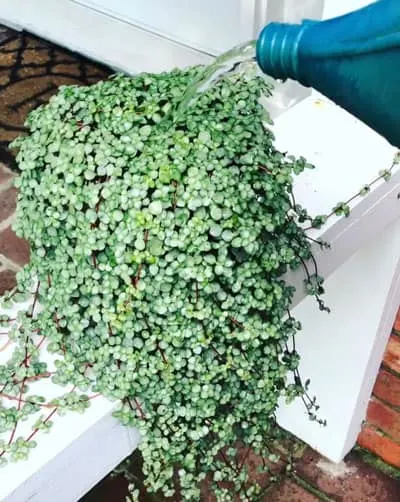
If you can strike a balance in soil moisture, and provide the recommended light for this plant as described above, you will be golden!
Allow up to half or so of the pot’s soil to dry out, but don’t wait too long that all of the soil dries out. You will start to lose a lot of leaves if this happens.
POTTING MIX
I like to use a certain potting mix recipe for this plant because it needs excellent drainage and needs to dry out fairly quickly. This mix would also work for plants like succulents.
My recipe that works really well for me is the following (I get everything from Amazon):
3 parts of Miracle Gro Cactus, Palm and Citrus Potting Soil and 1 part of perlite.
This provides a light, fluffy, and well drained potting mix that is critical for all plants, and especially plants like Pilea that do need to dry out fairly quickly in between watering.
TEMPERATURE & HUMIDITY
This plant does well in average indoor conditions. If you are comfortable, your plant will be comfortable too!
No special provisions need to be made for this plant. Although higher humidity will benefit this plant, it does just fine in average indoor conditions.
If you can increase humidity for your houseplants, it will certainly benefit them if you go the extra mile.
Not all methods to raise humidity are effective, so be sure to read the post I linked to above so that your plants can really benefit! I also talk about my absolute favorite humidifier in that post so be sure not to miss it.
PROPAGATION
Pilea glauca can be easily propagated by taking stem cuttings and simply laying them on top of soil.
Cut segments that are 1-2 inches long or so (2.5-5cm) and lay them on top of the soil surface. Be sure that the surface is flat so that you have good contact with the soil.
Keep the soil relatively moist, and having higher humidity while propagating is definitely very beneficial and will increase your success rate substantially.
You can place the pot in a clear plastic bag until the cuttings have rooted. Be sure to open the bag every day or two in order to air it out. This will decrease the chances of rotting and mold growth.
Have you tried out Pilea glauca? It is a delightful houseplant that will provide a whimsical touch to any collection!

